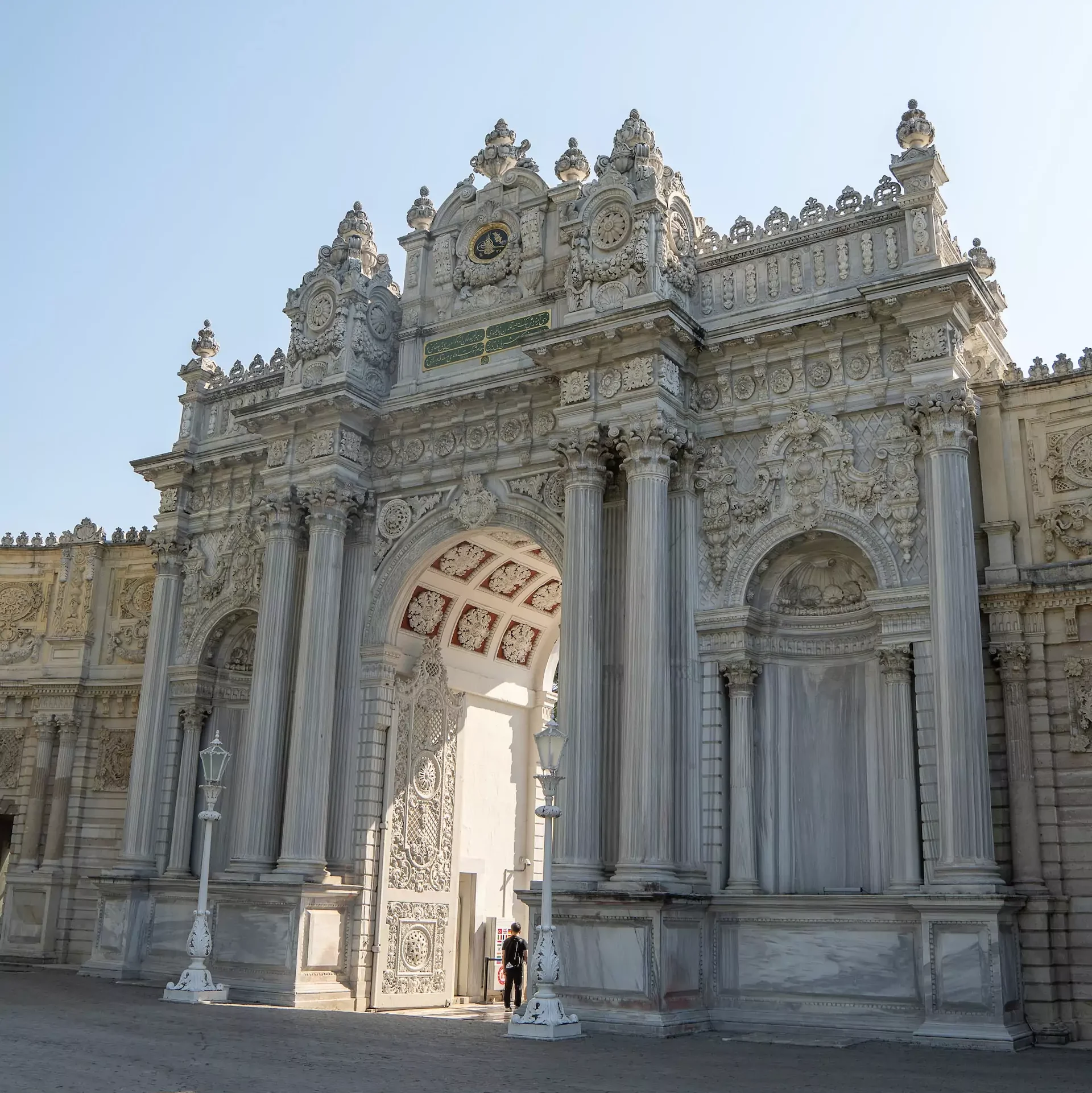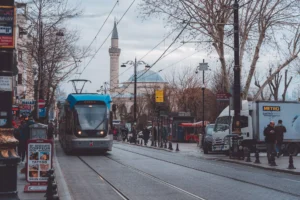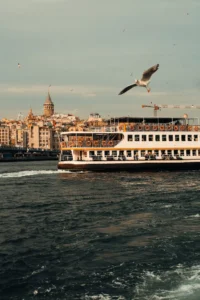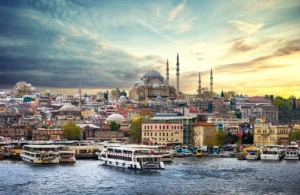Are you ready to explore one of Turkey’s greatest historical sights? The Dolmabahce Palace is an ornate palace on the European shore of the Bosporus Straits, in Istanbul. Built by Sultan Abdulmecid in 1853 and completed 12 years later, it has since come to be known as a symbol of both Ottoman and Turkish culture. Renowned for its opulent interiors adorned with Baroque period furnishings and expansive gardens, this extensive estate vividly showcases centuries of unique architectural design and refinement.

Exploring the Magnificent Dolmabahce Palace in Istanbul
Whether you want to explore Ottoman history in depth or just seek a scenic stroll through vibrant courtyards, this palace caters to all interests! In this guide we’ll explore all that the grounds have to offer and find out how best to experience them for yourself. So read on as we uncover all the secrets behind Dolmabahce Palace—from what makes it so special to where you should go first when visiting!
History and Significance of the Dolmabahce Palace
Nestled on the European coast of the Bosphorus Strait in Istanbul, Turkey, stands the majestic Dolmabahce Palace. Constructed in the mid-19th century, this grand edifice features neoclassical and rococo architecture and functioned as the administrative hub of the Ottoman Empire. It was also a residence for six sultans and the first president of the Republic of Turkey, Mustafa Kemal Ataturk. The palace boasts an impressive 285 rooms, 44 halls, a grand ballroom, and a crystal staircase that rivals those of the Palace of Versailles in France. Its interiors are a blend of the Ottoman, Neoclassical, and Baroque styles, adorned with exquisite chandeliers, paintings, and furniture, making it a sight to behold. Dolmabahce Palace is not only a testament to the Ottoman Empire’s grandeur but also represents Turkey’s rich cultural heritage.

A concise summary of the historical background
Constructed in 1842 by Ottoman Sultan Abdulmecid I, Dolmabahçe Palace is a big deal in Turkish history, covering both the Ottoman era and the Republican period. This amazing architecture was used as a residence and an official venue, briefly hosting Sultan Abdülaziz and Sultan Abdulmecid during their reigns. Even though they didn’t stay long, the palace played a crucial role in their rule.
After the Caliphate was abolished in 1924, Abdulmecid Efendi and his crew left the palace. Atatürk didn’t visit for three years, but his era brought incredible cultural and artistic progress, opening the palace to the world. It became a fancy spot for hosting foreign dignitaries during Atatürk’s time.
Once the Republic was declared, Dolmabahçe Palace became the esteemed Presidential Residence of Mustafa Kemal Atatürk. With its rich Ottoman heritage, transformation into the Presidential Residence, and being the place where Atatürk passed away on November 10, 1938, it holds immense significance for the Turkish people. Even after Atatürk’s passing, İsmet İnönü used the palace for visits to Istanbul and hosting foreign dignitaries.

Inside the Dolmabahce Palace – What to See and Do
If you’re planning a visit to the palace, you’re in for a treat! There’s so much to see and do inside those beautiful walls. From admiring the intricate details of the architecture to exploring the gardens, you won’t want to leave. One of the highlights for many visitors is getting a glimpse into the royal lifestyle by visiting the state rooms. These grand rooms are lavishly decorated and house some of the most priceless art and artifacts in the world.
Apart from the main building, the Dolmabahce Palace also has a museum section that showcases an extensive collection of art and artifacts. There are exhibits that consist of Ottoman calligraphy, paintings, ceramics, and sculptures. The museum area is well-organized and easy to navigate, and visitors can learn a lot about the history and culture of Turkey through the exhibits on display.
Another noteworthy feature of the Dolmabahce Palace is its location on the banks of the Bosphorus. The palace is surrounded by beautiful gardens that are meticulously maintained, and visitors can take a leisurely stroll through them as they take in the stunning views of the water. There is also a small dock area where visitors can take boat tours that depart from the palace. These tours are a great option for those who want to see Istanbul from a different perspective.






Is it worht visiting the Dolmabahce Palace?
Absolutely, a visit to the Dolmabahçe Palace is worth every minute spent there. It’s not just a historical monument, but also an architectural marvel that reveals the grandeur of the Ottoman Empire. The palace showcases captivating views of the Bosphorus, stunning gardens, and an impressive collection of art and artifacts that provide a rich insight into Turkish history and culture. Whether you are a history buff, an art enthusiast, or simply someone who enjoys exploring new places, the Dolmabahçe Palace has something for everyone.

Visiting the Palace – Timings, Tickets, Tours & Tips for your visit in 2023
Opening hours of the Dolmabahce Palace
The Dolmabahce Palace welcomes visitors from Tuesday to Sunday, offering a captivating experience from 9:00 am to 5:00 pm. Please note that the palace remains closed on Mondays, as well as on the first day of religious holidays and New Year’s Day.
Tickets and entry prices of the Dolmabahce Palace
The ticket for Dolmabahce Palace is priced at 650 TL and grants access to Selamlık, Harem, and the Painting Museum. It is valid for one week. Alternatively, there is the National Palaces Full Pass available for 900 TL, which includes entry to Dolmabahçe Palace, Palace Kiosk and Pavilions of the Asian Side, and Palace Kiosk and Pavilions of the European Side. If you possess a Museum Pass valued at 2,250 TL, you can enjoy free entry to Dolmabahce Palace.
How to go to the Dolmabahce Palace
The Dolmabahce Palace is extremely accessible and easy to reach. It’s located near several public transportation options, including the ferry dock, T1 tram line and bus stations. Before boarding public transportation, ensure that you have your IstanbulKart readily available.

- Tram: If you’re coming from the Sultanahmet, Eminönü, or Karaköy areas, the Bağcılar-Kabataş tram line T1 is your best choice. Get off at Kabataş Station, and from there, it’s just a short 5-minute walk to the palace.
- Metro: If you’re in the Taksim area or traveling by metro, you can take the F1 funicular line from Taksim Square Station. This convenient tram will take you directly from Taksim Square to Kabataş. With only one stop, alternating between Taksim and Kabataş, the ride lasts less than 5 minutes.
- Ferry: For those coming from the Anatolian side, take a ferry from Kadıköy or Üsküdar to Beşiktaş or Kabataş. From there, it’s just a short walk to Dolmabahçe Palace. The distance from the Beşiktaş and Kabataş piers is approximately ten minutes.

Best time to visit the Dolmabahce Palace
The Dolmabahçe Palace in Istanbul is at its best during the lovely spring and autumn seasons. With mild temperatures and pleasant weather, these times of the year are perfect for exploring the palace’s outdoor areas and soaking in the stunning Bosphorus views. If you want a more peaceful experience, it’s a good idea to avoid the busy summer months. Also, check for any special events or closures and try to arrive early to fully immerse yourself in the fascinating history and cultural significance of this incredible landmark.
Conclusion
Dolmabahce Palace stands tall as an impressive reminder of the past and a sight that is not to be missed. It is a grandeur palace of history, secrets, tales and beauty. With its intricate design, magnificent rooms, surrounding gardenscapes and exquisite food, it will definitely leave you mesmerized. Whether you’re looking for a tranquil escape or a little glimpse into the fascinating past of Istanbul, Dolmabahce Palace should definitely feature on your itinerary. Make sure you plan ahead so that you can experience all the cultural intricacies of this wonderful palac.





